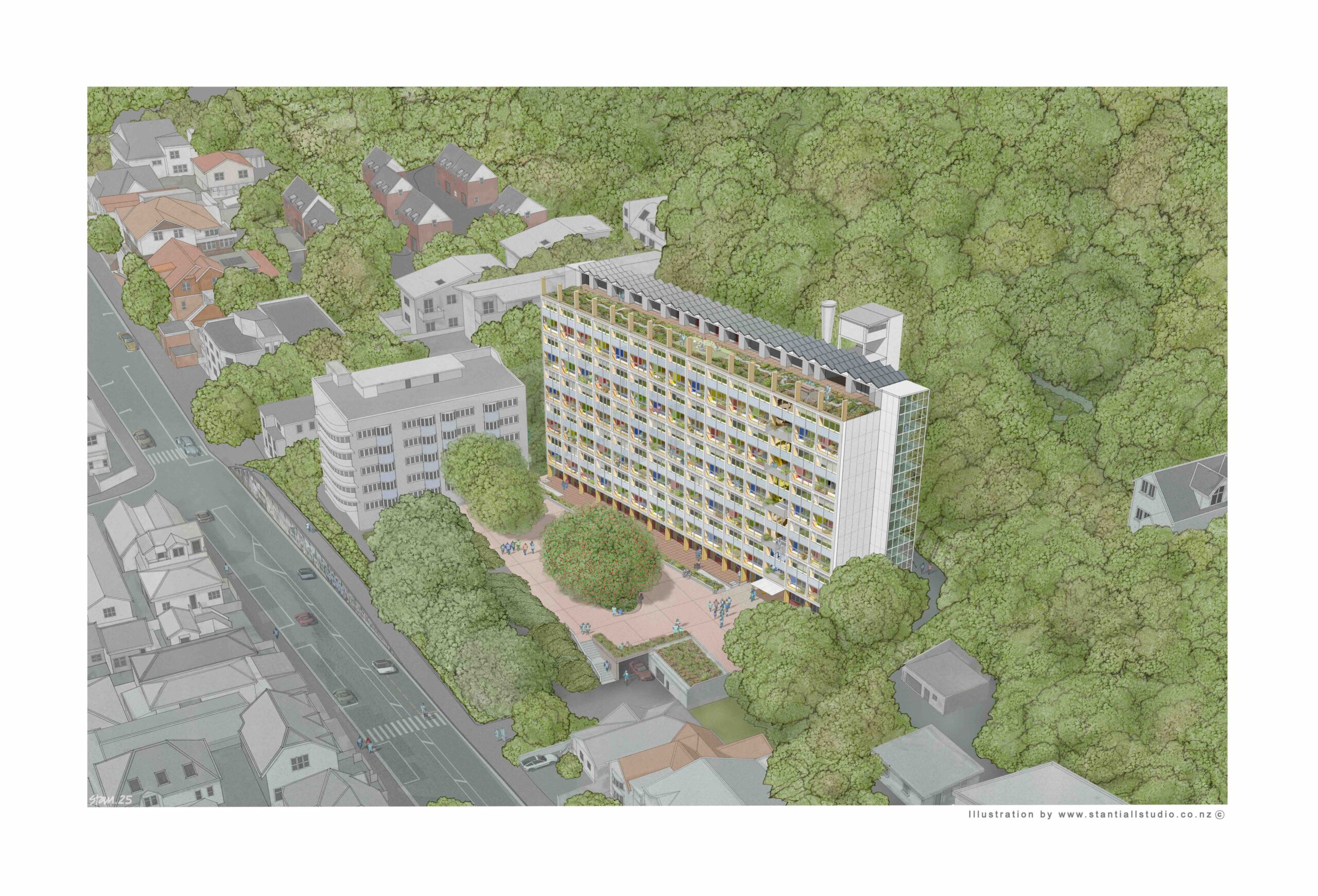Faster, greener, more affordable housing
- The Architectural Centre urges refurbishment of Wellington’s controversial Gordon Wilson Flats (GWF) as a greener, faster and more cost-effective solution for student and faculty housing.
- The new design keeps 80% of the concrete structure, replaces the facade with glass and re-strengthens with low carbon timber to maintain the geometry.
- The plan would save an estimated 92% of carbon compared to demolition and new equivalent structure being built.
Victoria University – Te Herenga Waka (VUW) is urged to reuse the structure of
Wellington’s controversial Gordon Wilson Flats (GWF) to deliver modern housing and save carbon, time, waste-to-landfill and impact on the city.
The Architectural Centre has put forward an alternative plan to VUW that would replace the building’s façade and reuse its main concrete core.
VUW intends to demolish the 11-story building and replace it with a new one, but has yet to release designs and costs including the loss of embodied carbon, the environmental impact and waste to landfill.
Architectural Centre President Paul Harvey says the University is out of step with a global movement to retain and adapt existing buildings, strengthening and renewing them.
GWF is a solution that’s hiding in plain sight so it’s disappointing that VUW seem to be ignoring their own key priority for ‘ecological thinking that contributes to a sustainable, resilient, and better world’.
The Architectural Centre’s draft design to renew GWF includes engineered wood, glass winter gardens (conservatories) and solar panels to provide 100 warm, dry apartments to house up to 350 people with space on the site for many more.
Architect Rob Tse who has worked on the design says the refurbished building will provide a mix of high-quality apartments alongside shared study rooms, communal lounges, and social spaces. A rooftop terrace will create a unique outdoor amenity for relaxation and play with sweeping views across the city.
“This design would use over 90% less carbon and be much better for the environment. There will be a huge amount of concrete being carted off to the landfill – and that will mean hundreds of extra truck movements that neighbours and others will have to put up with.”
“Refurbishing GWF would also be a lot faster; VUW’s own estimates are that full demolition alone would take more than half a year (35 weeks).”
“On the basis of our expert advice, we cannot see how the demolition of GWF plus a brand new building to accommodate 500 students on this site would be more cost effective than the strengthening and refurbishment of the existing building/s.”
“Renewing these flats makes sense from so many angles; more affordable, faster,
better for the environment with much less impact on neighbours too,” says Rob Tse.
Paul Harvey says so far VUW has not been interested in exploring an alternative plan to its outmoded plan to demolish GWF.
“There is a much better way – and that is to make use of the core building: reuse, renew and restore,” says Paul Harvey.
Contacts: Rob Tse rob.tse@architecture.org.nz +1(646) 808.9258


Leave a Reply